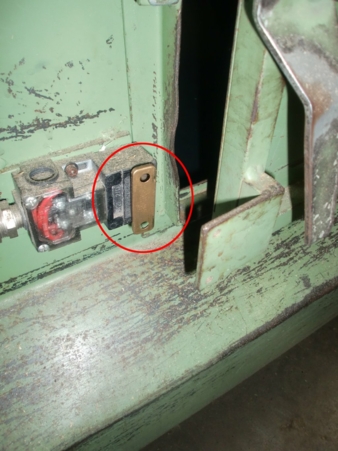29/06/2018 – Heimtex — auf Deutsch lesen
Ouch! It’s becoming a burning issue
Urgent: Accidents at work raise threat of legal recourse and prosecution!
Ever since a dramatic work accident in 2005, which had fatal consequences, the German occupational insurance associations for the textile industry (Berufsgenossenschaft BG) have devoted particular attention to the subject of safety at work. Anyone caught napping nowadays when it comes to safety at work can expect more than just a slap on the wrist.
At the end of the year before last, the occupational health and safety officer at one home textiles manufacturer was required to carry out a mindboggling 400 hours’ work for 2017, and the requirements of the insurance association were met only with the investment of enormous amounts of time and personal involvement from a large number of individuals. This commitment averted the imposition of penalties.
Accidents at work raise threat of legal recourse and prosecution
Moreover, in cases where statutory obligations have been grossly neglected, the business owner runs a significant risk of being sued for medical treatment and pension payments following an accident at work. The bad news is that while the level of implementation in the textile industry is slowly but surely rising, so too are the demands of the insurance associations. Where this exposes an unprotected flank for business owners, prompt and targeted action can help them get to grips with the significant risks involved.
The very first step is to appoint someone with responsibility for safety at work. For businesses with fewer than 50 employees, the business model will not allow owners the time to undertake the required specialist training for themselves. To estimate the measures required, the safety manager should, immediately on appointment, carry out a factory inspection. For the sake of the insurance association and the purpose of subsequently prioritising the steps required, this inspection must be carefully documented with text and photos. The next stage is to set up a filing system in the documentation area for risk assessments, operating manuals and instructions – even if these files are still empty at this stage, pending the minuting of the factory inspection.
Before starting on the time-consuming process of carrying out risk assessments, the required warning notices should be put up (ear protection, safety footwear, safety goggles etc.), an accident book should be provided in the first aid box and the required employment legislation should be displayed. Only then should selective risk assessments be started. Where these are concerned, it is better to get the three top assessments completed than to start on all of them at once, so set priorities here too, according to the likelihood of an accident occurring and its possible severity and consequences. A to-do list should be created for the remaining risk assessments. Before getting down to all of these, however, it is worth first preparing a register of hazardous substances, for two reasons: first, because hazardous substances are by definition dangerous, and second, because the register is something on which the insurance association’s inspection is likely to focus.
Following this, a system should be implemented in the business – with external support if necessary – to ensure that the requirements of employment legislation are being, and will continue to be, met. We recommend specifying the issue of safety at work as a separate business objective: at the end of the day, the health and safety of employees is a precious asset and one, moreover, that makes a significant contribution to a business’s ability to create gross added value.
When time is short for implementing safety at work, set the right priorities!
1. Appoint an appropriate person to be the safety expert where you are required by law to do so.
2. Carry out a factory inspection, minute the findings and create a prioritised list of steps required.
3. Set up a filing system for risk assessments, operating manuals and instructions.
4. Put up the required warning notices (ear protection, safety footwear, safety goggles etc.), provide an accident book for the first aid box, display the required employment legislation.
5. Then carry out risk assessments for the three working areas with the statistically greatest number of accidents or the highest apparent risk potential, and produce and document instructions accordingly.
6. Create a register of hazardous substances.
A proper process must then be established to ensure that this is regularly updated in the relevant areas.





